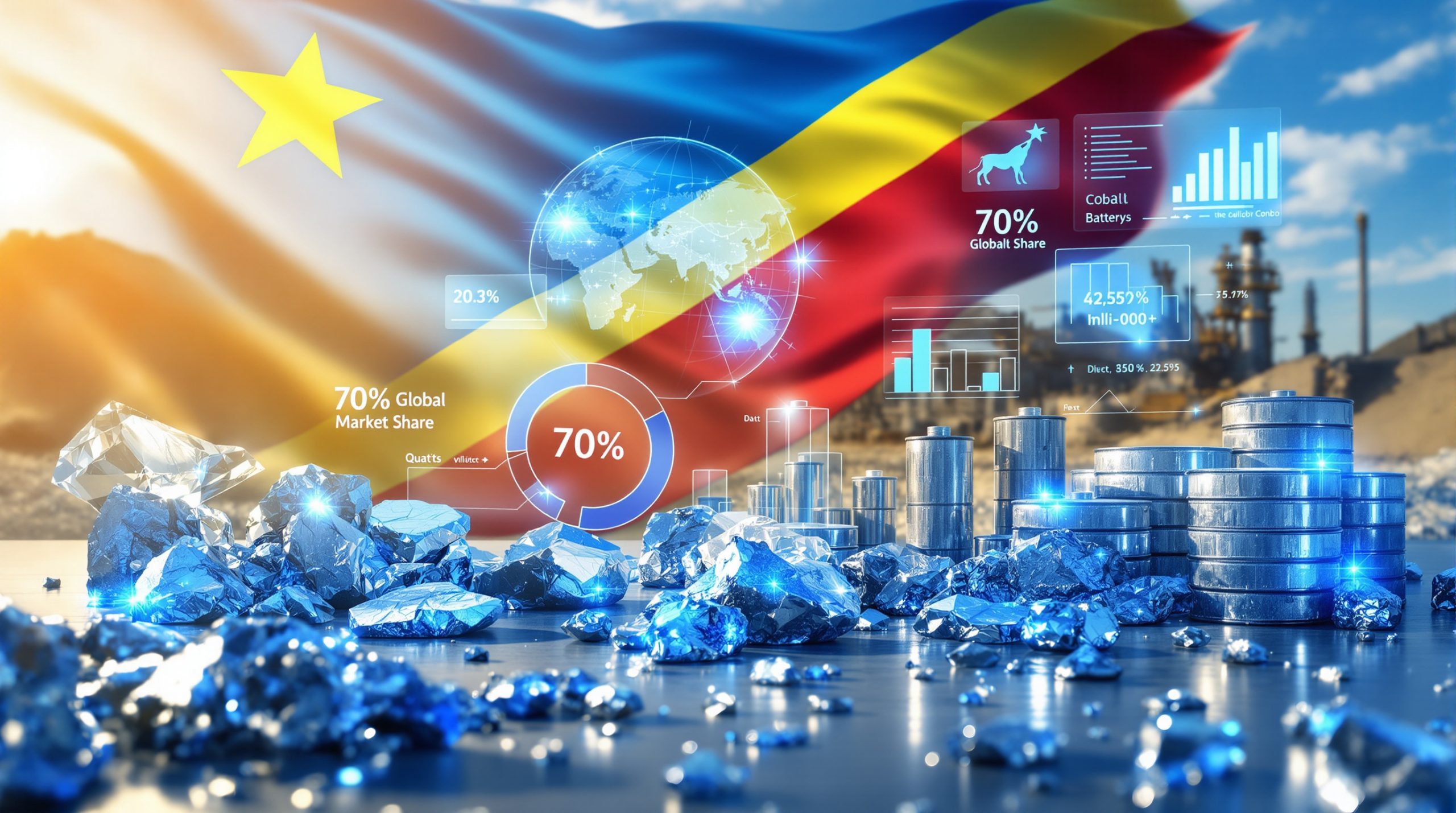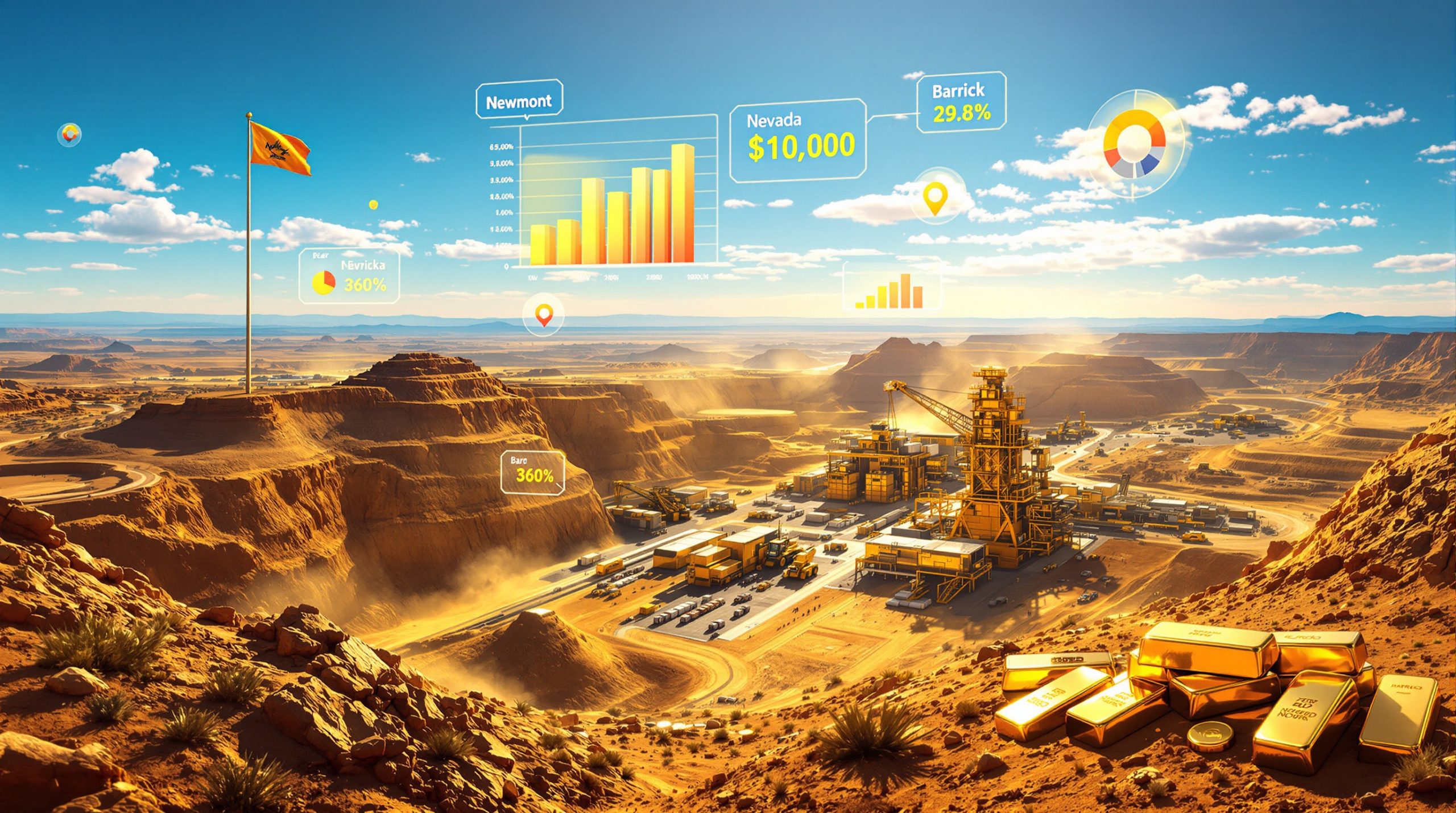Countries with the Largest Gold Reserves: A Global Overview
Gold reserves represent one of the most critical strategic assets for nations worldwide. Beyond their economic value, these reserves serve as indicators of national wealth, financial stability, and geopolitical influence. As of 2024, the distribution of global countries with the largest gold reserves reveals fascinating patterns of resource concentration, with certain countries controlling significant portions of the world's known deposits.
What Makes Gold Reserves Strategically Important?
Gold has maintained its status as a premier store of value for thousands of years. In today's complex global economy, gold reserves provide nations with a physical asset that transcends the vulnerabilities of fiat currencies and digital wealth.
The Difference Between In-Ground and Central Bank Reserves
When discussing gold reserves, it's essential to distinguish between two fundamentally different concepts:
In-ground reserves represent gold deposits that geological surveys have confirmed exist within a nation's territory but remain unmined. According to the U.S. Geological Survey (USGS), global in-ground gold reserves currently total approximately 54,000 metric tons.
Central bank reserves consist of already-mined gold held in national vaults as part of a country's financial assets. These holdings serve as a direct component of national wealth.
While in-ground reserves represent potential future wealth, central bank holdings provide immediate financial security. Nations with substantial reserves of both types enjoy significant advantages in global economic positioning.
Economic and Geopolitical Significance of Gold Reserves
Gold reserves function as powerful economic stabilizers, particularly during periods of market volatility. As noted by the World Gold Council, central banks increased their gold purchases by 25% in 2023, highlighting gold's enduring role as a hedge against currency fluctuations and economic instability.
"Gold reserves act as financial stabilizers against currency volatility," stated a recent USGS Mineral Summary report, underscoring their importance in maintaining economic sovereignty.
Beyond economic considerations, gold reserves also confer geopolitical advantages. Nations with substantial gold holdings can exert influence over global gold markets and potentially affect price stability. Additionally, gold remains one of the few assets recognized universally, transcending political alliances and trade barriers. Understanding these dynamics is critical when examining the gold market analysis: trends & predictions for 2024-2025.
Which Countries Have the Largest In-Ground Gold Reserves?
The distribution of unmined gold reserves reveals interesting patterns of geographic concentration, with relatively few nations controlling the majority of known deposits.
Australia: Leading the World with 12,000 Metric Tons
Australia stands at the forefront of global gold reserves with an estimated 12,000 metric tons of in-ground gold. This impressive figure results from Australia's exceptional geological conditions and substantial investment in exploration technology.
The country's gold deposits are concentrated in several world-class mining districts:
-
Cadia Valley (New South Wales): Operated by Newmont, this deposit contains approximately 17 million ounces of gold reserves as of 2023.
-
KCGM/Super Pit (Western Australia): Northern Star Resources controls this massive operation with 13.3 million ounces in reserves. The company notes that these reserves "reflect decades of reinvestment in deep-level exploration."
-
Boddington (Western Australia): Another Newmont property, containing 10.8 million ounces. This mine employs advanced processing technologies to extract gold from low-grade ores.
Australian gold mining benefits from political stability, well-established infrastructure, and progressive mining regulations. Recent exploration efforts have focused on deeper deposits, with AI-powered exploration techniques revealing previously undetected mineralization at several established mining districts.
Russia: Matching Australia with 12,000 Metric Tons
Russia equals Australia with an estimated 12,000 metric tons of in-ground gold reserves. However, the development context differs substantially due to geopolitical factors.
Major Russian gold deposits include:
-
Sukhoy Log (Irkutsk region): With over 2,770 tonnes (89.1 million ounces), this represents Russia's largest gold deposit and one of the world's most significant undeveloped resources.
-
Natalkinskoye/Natalka (Magadan region): Containing approximately 1,385 tonnes, this deposit employs autoclave technology to process refractory ores effectively.
-
Olympiadinskoye/Olimpiada (Krasnoyarsk region): With approximately 949 tonnes, this deposit represents one of Russia's most productive mining operations.
Geopolitical factors significantly impact Russia's gold sector. Western sanctions have redirected approximately 40% of Russian gold exports to China since 2022, creating new market dynamics. Despite these challenges, Russia has accelerated domestic gold production, viewing it as a strategic asset for reducing dependency on dollar-denominated transactions.
How Do Other Major Gold Reserve Countries Compare?
Beyond the top two holders, several nations control substantial gold reserves that significantly influence the global market. A comprehensive understanding of these distributions is reflected in historical trends in gold and silver investments.
South Africa: Historical Leader with 5,000 Metric Tons
South Africa holds approximately 5,000 metric tons of in-ground gold reserves. Once the world's dominant gold producer, South African output has declined by approximately 75% since 1980 due to depleting near-surface deposits and increasing production costs.
The country's gold mining industry faces substantial challenges:
- Aging infrastructure requiring significant capital investment
- Extreme mining depths (often exceeding 3.5 km) with associated safety concerns
- Labor disputes and rising electricity costs
Despite these challenges, South African mines continue to produce substantial gold volumes, with companies investing in mechanization and digital technologies to improve profitability.
The Asian Gold Giants: Indonesia and China
Indonesia ranks high with 3,600 metric tons of in-ground reserves. The country's Grasberg mine, operated by Freeport-McMoRan, produces approximately 1.6 million ounces annually, making it one of the world's most productive gold mines.
China holds approximately 3,100 metric tons of reserves while simultaneously maintaining the world's largest gold production. As noted by the China Gold Association, "China's focus on securing domestic reserves has driven a 15% year-over-year exploration budget increase" as the nation seeks to reduce reliance on imports.
Both nations have implemented policies to increase domestic processing of gold ores rather than exporting raw materials, aiming to capture more value within their borders.
North American Gold Reserves
Canada possesses approximately 3,200 metric tons of gold reserves, concentrated in districts like Abitibi-Greenstone Belt in Quebec and Ontario. Canadian mining benefits from an efficient permitting process (3-5 years versus the U.S. average of 7-10 years) and advanced mining technologies, such as the autonomous drilling rigs at the Malartic Mine that reduce operational costs by 30%.
United States holds around 3,000 metric tons of in-ground reserves, primarily in Nevada's Carlin Trend. American operations benefit from well-developed infrastructure but face increasing regulatory scrutiny, particularly regarding environmental impacts. The U.S. also maintains one of the largest gold reserves by country in terms of central bank holdings.
South American Gold Potential
Several South American nations possess significant gold reserves:
- Peru: 2,500 metric tons, though illegal mining accounts for approximately 20% of production
- Brazil: 2,400 metric tons, with recent Amazon mining reforms in 2024 adding 400 tonnes to official reserves
- Kazakhstan: 2,300 metric tons, with reserves growing by 22% since 2022 through joint ventures with major companies like Barrick Gold
These nations represent important emerging sources, with substantial exploration activity revealing new deposits throughout the region.
How Are Gold Reserves Measured and Verified?
Accurately measuring and verifying gold reserves requires sophisticated methodologies to ensure reliable resource estimates.
USGS Methodology and Standards
The U.S. Geological Survey employs advanced 3D modeling and grade interpolation techniques to assess gold deposits with approximate ±10% accuracy. Their methodology distinguishes between:
- Proven reserves: Deposits with greater than 90% extraction certainty
- Probable reserves: Deposits with approximately 50% certainty
- Possible reserves: Deposits with reasonable geological indications but requiring further confirmation
These assessments incorporate factors including geological continuity, metallurgical recovery rates, and economic viability at current market prices.
Industry Standards for Reserve Reporting
Two major standards dominate global reserve reporting:
JORC Code (Joint Ore Reserves Committee) requires 90% confidence for "Proven" classification and governs reporting in Australia and several other jurisdictions.
NI 43-101 (National Instrument 43-101) requires 85% confidence for the highest classification level and applies primarily in Canadian markets.
Both standards mandate that qualified persons with appropriate experience verify all reserve calculations. Key technical parameters in reserve estimation include:
- Cut-off Grade: Typically 0.5–1.0 grams/tonne for open-pit mines
- Recovery Rate: The percentage of gold that can be economically extracted
- Price Assumptions: The gold price used to determine economic viability
These standards have evolved to incorporate ESG (Environmental, Social, and Governance) criteria, with some jurisdictions now excluding reserves in conflict zones or environmentally sensitive areas.
What Factors Influence Future Gold Reserve Accessibility?
Multiple factors affect the accessibility of gold reserves, creating a complex landscape for future production planning. These dynamics significantly impact why gold stocks struggle to keep up with gold's performance.
Environmental and Regulatory Challenges
Gold mining faces increasing environmental scrutiny worldwide. Environmental permitting delays cost miners approximately $20 per ounce in holding costs, according to the World Gold Council (2024). Key challenges include:
- Water usage and potential contamination
- Land disturbance and habitat impacts
- Energy consumption and carbon emissions
These challenges have lengthened permitting timelines significantly, with many jurisdictions requiring comprehensive environmental impact assessments that can take years to complete.
The industry has responded with substantial sustainability initiatives, including water recycling systems, renewable energy integration, and comprehensive mine reclamation planning. Some companies have successfully implemented cyanide-free processing methods, addressing one of the industry's most controversial practices.
Technological Innovations in Gold Extraction
Technological advances are expanding recoverable reserves by:
- Making lower-grade deposits economically viable
- Enabling safer access to deep or complex orebodies
- Reducing environmental impacts of extraction
According to Mining Technology Journal (2024), "Bioleaching could unlock 8,000 tonnes of refractory gold globally" by using bacteria to process difficult ores. Similarly, AI-powered exploration tools have increased discovery rates by approximately 35% since 2020 by identifying subtle patterns in geological data that human analysis might miss.
What's the Outlook for Global Gold Reserves?
The long-term outlook for global gold reserves depends on the balance between new discoveries and depletion of existing resources. This outlook is critical for investors considering top gold ETFs and investment strategies for 2024.
Exploration Trends and New Discoveries
Global exploration budgets reached approximately $12 billion in 2024, representing an 18% year-over-year increase, with Africa and Latin America receiving particular attention. Recent significant discoveries include Ghana's Obuasi expansion, which added approximately 600 tonnes through ultra-deep drilling technology.
Despite these investments, S&P Global (2025) reports that current production consumes reserves approximately 1.6 times faster than new discoveries are made, creating potential long-term supply constraints. This scarcity factor is key to understanding Macquarie's bold gold price forecast for 2025.
Sustainability of Current Reserves
At current production rates of approximately 3,000 metric tons annually, known global countries with the largest gold reserves would theoretically last about 18 years. However, this calculation oversimplifies a complex reality:
- Rising gold prices make previously uneconomic deposits viable
- Technological advances increase recovery from existing mines
- Recycling provides approximately 300 tonnes annually from sources like electronics waste
Price sensitivity significantly impacts reserve calculations. A gold price of $2,300 per ounce versus $1,800 can increase economically viable reserves by 15-20% without any new discoveries, simply by changing the economics of extraction.
FAQ About Global Gold Reserves
What's the difference between resources and reserves?
Resources represent the total amount of gold identified in a deposit, while reserves specifically refer to the portion that can be economically extracted with current technology. A deposit might contain substantial gold resources, but only a fraction may qualify as reserves due to factors like extraction costs, accessibility, or metallurgical challenges.
Economic viability determines reserve status, and resources can become reserves through further study, improved technology, or higher gold prices.
How do gold reserves impact global gold prices?
The relationship between reserves and prices operates through multiple mechanisms:
- Major reserve announcements can influence futures markets by signaling potential supply changes
- Central bank reserve purchases remove gold from the market, potentially supporting prices
- Long-term depletion concerns can drive investment in physical gold as a scarce asset
However, short-term price movements typically respond more strongly to macroeconomic factors than to changes in reserve estimates.
Which countries are increasing their gold reserves most rapidly?
Kazakhstan has shown the most dramatic reserve growth, increasing in-ground reserves by approximately 22% since 2022 through joint ventures with major mining companies including Barrick Gold. Other notable growth regions include:
- West Africa, particularly Ghana and Burkina Faso
- Central and South America, especially Brazil and Ecuador
- Canada's Nunavut region, which added approximately 800 tonnes through AI-powered exploration in 2024
These emerging mining jurisdictions often offer less explored territory with significant discovery potential.
How do mining companies value in-ground gold reserves?
Mining companies employ discounted cash flow models that typically apply 5-10% discount rates to future production. For example, Newmont's 2024 reserves use an all-in sustaining cost (AISC) assumption of $1,450 per ounce.
Valuation incorporates multiple factors:
- Extraction timeframe (near-term production carries higher present value)
- Capital expenditure requirements for development
- Political risk in the jurisdiction (higher risk demands higher potential returns)
- Technical complexity and associated production costs
Companies typically review and update these valuations annually based on current gold prices, cost projections, and exploration results.
Ready to Spot the Next Major Gold Discovery?
Don't miss out on transformative investment opportunities in the gold sector—Discovery Alert's proprietary Discovery IQ model instantly notifies you of significant ASX mineral discoveries, turning complex data into actionable insights. Discover why major mineral finds can lead to exceptional returns by visiting Discovery Alert's dedicated discoveries page.




